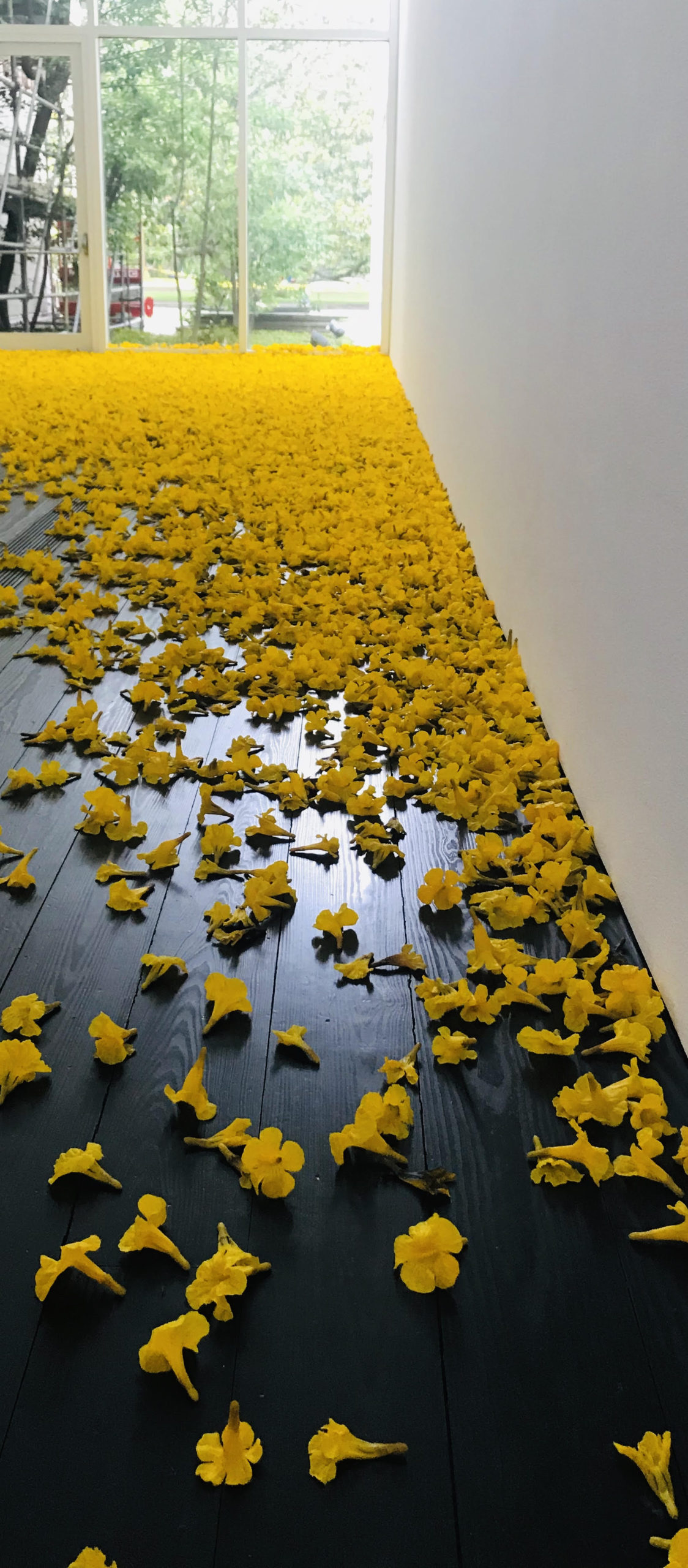
Thousands of bright yellow blossoms strewn across a dark wood floor form a powerful art installation at the Menil Collection in Houston. What adds to the installation’s intrigue is its vulnerability. It sits on the floor at the end of a hallway. There are no visible barriers — you can walk right up to the work. It appears as though someone left a door open and the wind deposited a yellow carpet at the end of the hallway. It is very difficult to tell, but the blooms are artificial, made from recycled polyvinyl chloride. The blossoms are modeled after the flowers on the Roble Amarillo Tree found in the Caribbean — one of the 36 regions in the world identified as a biodiversity hotspot. There were seven different models made of the flower, each in a different stage of decay. Each flower was hand painted, which adds to the realistic nature of this striking installation.
The Puerto Rico-based artistic duo, Jennifer Allora and Cuban-born Guillermo Calzadilla, are focusing our attention on a fragile ecological predicament. They see the legacy of colonial rule in the Caribbean as the systematic degradation of the region’s bio diversity. When combined with climate change, it forms a destructive cocktail that is threatening the region’s precious flora and fauna. The duo’s unvarnished observations are cutting and demand introspection. They use the term “acedia” to describe the ideas behind the work. The term refers to the “deadly sin” of apathy — a lack of interest or caring with overtones of laziness. “This affliction in many ways seems to summarize the contemporary moment in which one finds oneself feeling supremely awake, animated, immersed in very strong sensations and feelings, but not alive. Acedia make the present intolerable and the future impossible to imagine.” The installation is haunting, something that at first glance appears so vibrant, hopeful and real, but with all the life sucked out of it. The stillness of this work renders it “unreal.”
